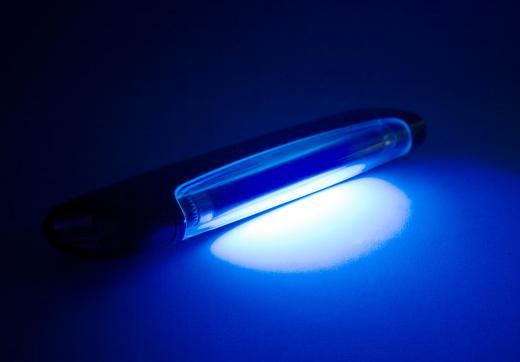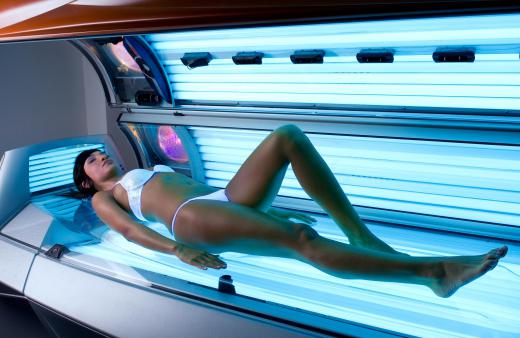Ultraviolet (UV) bulb is a fairly generic term to describe most types of lamps capable of producing ultraviolet light. UV light is a short wavelength form of electromagnetic radiation which is generally invisible to the naked eye. It occurs naturally in sunlight and is generated artificially in electric arcs and ultraviolet lamps. Common UV bulb types include fluorescent tubes, black light, and gas discharge lamps. UV lamps have a wide range of uses including in medical and cosmetic treatments, pest control, security verification, and curing certain adhesives.
Ultraviolet light features wavelengths of between 10 and 400 nanometers which places it in a higher frequency rang than that of violet light, hence its name. UV light occurs naturally in sunlight and also is generated artificially by electric arcs and specially designed lamps. There are several classes of UV bulb all having specific ultraviolet radiation characteristics such as UV-A, UV-B, and UV-C wavelengths. The most common of these are high pressure mercury or fluorescent varieties although several other types are available. Theses include xenon arc, metal-halide, mercury-xenon arc, deuterium arc, and tungsten-halogen incandescent lamps.

A UV bulb is typically made up of a glass envelope containing a pressurized mixture of inert gases and small quantities of mercury. This glass envelope also contains an electric filament coated with a carefully formulated and applied phosphor layer. When the bulb is energized, the inert gases transmit the charge to the mercury, causing a reaction in its atomic structure and the production of UV radiation. The phosphor coating effectively screens this radiation to allow certain wavelengths of UV light to be emitted dependent on the coating structure. Manipulation of the composition of this phosphor layer allows for very precise control of the volume and nature of the emitted UV light.

These bulbs can be used for a variety of processes which rely on exposure to the various UV wavelengths. Common UV systems include medical and cosmetic treatments such as sun beds used for tanning and the treatment of eczema and vitiligo. Photochemotherapy used to treat psoriasis is a combination treatment involveing simultaneous exposure to psoralens and UV-A light. UV light is also a useful forensic investigative tool as it exposes the presence of bodily fluids such as blood, semen, and saliva irrespective of the surface deposited on. Shortwave UV-C light is also often used as to kill off bacterial such as E. coli and Giardia in drinking water by rendering the microorganisms unable to replicate.

A bulb of this kind is also used as an insect attractant device in bug zappers. Items printed or coated with several phosphorescent materials glow vividly when exposed to UV light and are used extensively as decorative accessories. UV light sources are also put to work in security verification devices capable of exposing otherwise invisible security features on holographic credit cards and bank notes. Emissions from a UV bulb can also remove programming from erasable programmable read only memory (EPROM) components. Many adhesives and potting resins also cure or harden when exposed to UV bulb light sources which allows for cure-on-demand flexibility in their use.
